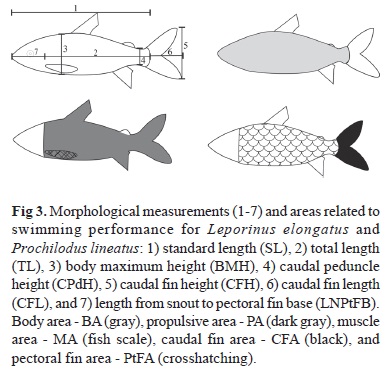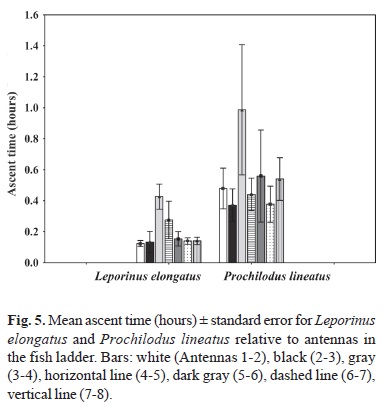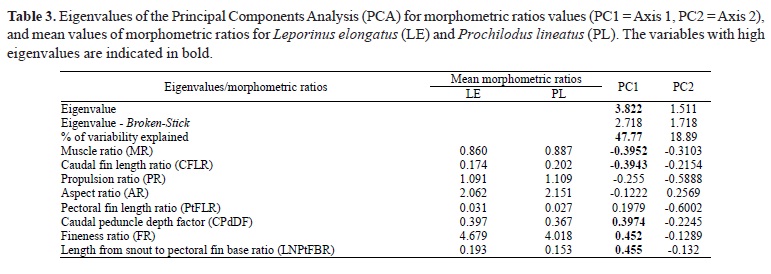This study investigated the external body morphology (based on morphometric data) and the swimming efficiency in fish passages (based on the ascent time in a fish ladder) of two Neotropical long-distance migratory species. The fish were collected in the fish ladder of the Porto Primavera Hydroelectric Power Plant (known as Engenheiro Sergio Motta), upper Paraná River, Brazil. The species differ in several morphometric ratios related to swimming performance. Prochilodus lineatus exhibited a higher muscle ratio and caudal fin length ratio. However, Leporinus elongatus showed higher values for the fineness ratio, a higher length from snout to pectoral fin base ratio, and a higher caudal peduncle depth factor. Although both species show good swimming performance, the characteristics listed above may enable L. elongatus to apply greater power and propulsion, allowing it to reach a high swimming speed and to exhibit greater efficiency than P. lineatus. Leporinus elongatus moves faster than P. lineatus and has a lower mean ascent time (1.39 hours) than P. lineatus (3.76 hours). Prochilodus lineatus would require a somewhat longer time to pass through the fish ladder.
Fineness ratio; Fish swimming; Fishway; Morphology; Swimming performance








